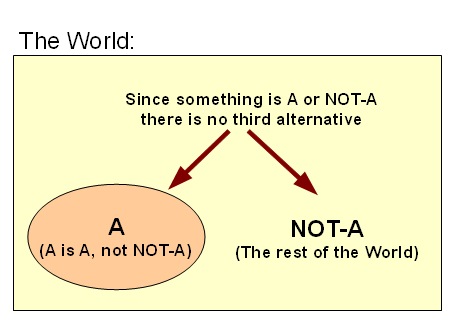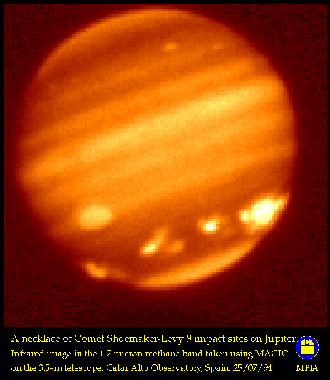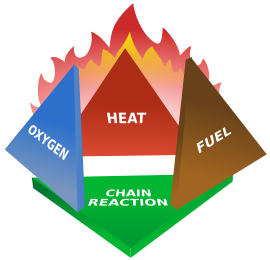It is time to get back to basics (BTB henceforth) on ID, but as step zero, we have to set first principles of right reason straight.
For instance, it seems that — once we are certain that we can be certain of nothing falls apart in absurdity — the fallback position on the issue of distinct identity is that it is only about an empty tautology, A = A that sets up a tiresome little game we call logic, when we would rather be playing another game, Science . . . actually, a priori Evolutionary Materialist Scientism and/or its fellow travellers.
(Now, I know I know, this is not about the scientific specifics that some crave getting back to the usual unyielding back-forth on. But, y’see, science lives in society and has to address worldview foundation issues, including not only ontology but ethics and more, especially when we go over to the underlying issue of ideological impositions on science institutions and education. Where, too often we have seen deadlock and intransigence, backed up by oh we control the institutions and set the rules so there. And, we are therefore following up the trail on where the intransigence is coming from to its source, having found disagreement on technical, ethical, ontological and policy issues, then on the logic of chained warrant, and at length we have now arrived at first principles of right reason. The principle is, if the foundations are destroyed or undermined, the building erected on them cannot stand. So, indulge us the favour of allowing us to draw the issue together and sum up as a basis for reassessing the actual merits on the science and linked science in society issues we also need to face.)
Accordingly, I have amplified as follows, in a response to LH that I now clip and augment with what a full Original Post allows:
____________
>>Again [LH], to post a comment in reply you have used letters etc, relying implicitly on distinct identity.
{Such as a bright red ball on a table and the ontological/logical issue of distinct identity it sets up:}
Do you or do you not acknowledge that once distinct identity A obtains (immediately, letters and/or phonemes are in view but this is an illustrative example of a pattern that obtains for Jupiter in the sky
or the ground underfoot, or the PC you are using etc),
I: A is itself (A = A, with all that is implied for A to be, and to have its distinct nature/identity that allows us to give it a relevant name or label),
II: A is not at the same time and in the same sense its opposite ~A (A AND ~A = 0), and
III: that anything x in the world is going to be either A or else ~A? (A XOR ~A = 1)
If you acknowledge such, you have acknowledged the infallible self-evident and foundational certainty of LOI, LNC and LEM. And no, it’s a tautology that only has inner world significance does not obtain once we see that the concept that there is an ugly gulch barring knowledge of the external world collapses in self-referential incoherence. So soon as you argued with others, using text and pc’s etc you conceded that by direct implication.
If you do not, you are absurdly self-referentially incoherent and that emerges so soon as you post or posted a comment that relies on distinct identity to work.>>
____________
In short, as UD blog contributor Stephen B sometimes gives as an apt, three perspective summary of the pivotal law of non-contradiction, e.g. here:
[If] an object has an essence or a nature [–> thus, a distinct identity], we do, in fact, know what it is by virtue of having abstracted its universal “whatness” from the particular we encounter through our senses.
In other words, the law of non-contradiction is true
- ontologically–a thing is what it is and cannot also be something else at the same time and in the same way.
- logically–a proposition about that thing cannot be true and false at the same time and in the same way.
- psychologically–a proposition about that thing cannot seem to be true and false at the same time and in the same way.
So, when something A exists, as itself sitting there like Jupiter in the sky with a line of impacts from Shoemaker-Levy as seen in IR, it can be viewed as having possibility and actuality of being. This means that it has core, mutually compatible characteristics, unlike a proposed square circle for which what is needed to be circular or to be squarish cannot be met in the same sense, point, entity and circumstances:
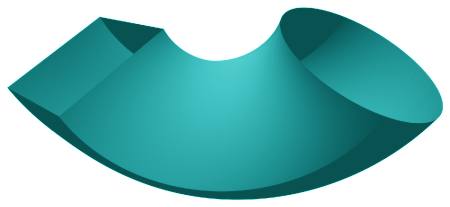
cannot be circular and
square in the same
sense and place at the same time
But that’s trivial, and it’s not science!
It is foundational — another thing that is so sharply contested — and it is indeed ontological-logical, but without first acknowledging this or implicitly using it, there is no basis for doing science. And, one of the rhetorical tactics we consistently see is the refusal to acknowledge foundational self-evident truths in order to be able to play at selectively hyperskeptical logic with a swivel. When it suits the agenda, all proceeds smoothly, but once logic and fundamental issues of being cut across the agenda suddenly all is dubious and you Creationists in Cheap Tuxedos are trying to smuggle your god into Science.
So, when we stand in a day of rampant illogic and incoherence, it is an act of courage to say, A is itself, A is A, A = A. Where the equals sign means that the RHS re-states and perhaps amplifies or explains what is on the LHS. Where for Science, we are concerned to think logically about real things on the real ground as investigated empirically by real observers.
Next, when A is, we are entitled to another revolutionary act: ask and seek to answer why A is, expecting a reasonable answer.
And yes, I here stated a weak form principle of sufficient reason, let’s tag w-PSR. This is embedded in the fundamental vision of science and if someone objects, I simply look at A — Jupiter in the sky with those nine scars on it and the red spot etc — and ask why is this here? Then, I proceed to apply empirical investigations and logic, including deduction and induction to seek a best current understanding that is empirically reliable. You try to do Science without such as an underlying premise.
The w-PSR points to ontological issues, questions of fundamental being, nature and by implication origin.
Where we have already seen that some candidate-beings are impossible and others are possible, tied to whether such a distinct identity is coherent and thus feasible. There is no possible coherent and detailed state of affairs — no possible world — in which a square circle can exist. But bright red balls on the table or in the sky are very feasible.
Yes, this is vital, A is itself is tied to whether such an A can exist.
Then, of possible beings, we see that some are contingent, dependent on external, enabling on/off factors; such as how the fire tetrahedron:
. . . illustrates how four enabling factors are each necessary and jointly sufficient for a fire to begin or be sustained. A fire is contingent and the on/off factors are why it can begin, be sustained, and come to an end. These are causal factors and each such factor is a necessary causal factor — remove it and the fire is blocked from beginning or being sustained. Indeed that is how firemen fight fires.
Then, we notice, a sufficient cluster of factors such that when such is present, the fire will begin or be sustained. This shows us an adequate or true cause in action.
Which can include a cause adequate to set up a statistical/probabilistic distribution of possible outcomes, e.g. tossing dice:
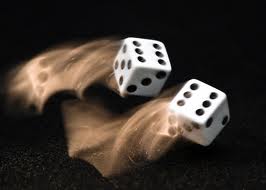
Later, we will look at the vera causa principle championed by Newton and acknowledged by Lyell and Darwin, that
VERA CAUSA: in explaining the cause of things we cannot directly inspect (such as remote reaches of space or the past of origins) it is reasonable to insist that we only consider as explanations causes shown to be adequate to cause the like effect.
(NB: Adhering consistently to this principle, by itself, would remove most of the rhetorical, ideological and institutional barriers encountered in addressing the controversies over the design inference on tested, empirically reliable signs.)
What about things that do not depend on external on/off enabling causes?
Can such exist?
Yes, and a characteristic of a serious candidate to be such is that it will either be impossible of being or present in any possible world, as it will be inextricably entangled in the framework for such a world to exist.
A simple example is the reality of two-ness, one thing and another thing, which is closely connected to distinct identity of some thing A and linked world partition of W:
W = {A|~A}
There is no possible world in which two-ness cannot exist.
If you doubt me, start with the set that collects nothing, {}:
{} –> 0
{0} –> 1
{0, 1} –> 2
. . .
This never began, nor can it cease from being, it is a necessary being.
All of this abstract stuff . . . !
. . . Is highly relevant to reality.
For, consider an utter nothing, true non-being (as opposed to quantum foams and multiverses etc.)
Such can have no causal properties, so if utter non-being ever existed, such would forever obtain.
If something — a world — now is, SOMETHING ALWAYS WAS.
Something unconditioned by other realities.
And, as our observed cosmos credibly had a beginning:
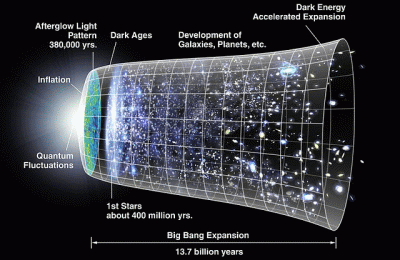
. . the material world we inhabit is patently contingent and has a deeper causal root; ultimately in a necessary being.
That is the context in which we do science, seeking to describe, explain/understand, predict and influence our world by compiling observations on the things we see in it, the orderly patterns of factors, forces and effects we see, and resulting dynamics. Then, as we infer from observed patterns, we look to stating and at least provisionally validating empirically reliable laws, explanatory accounts and theories that are of inductive — yes, inductive — character.
Arguments, where evidence and reasoning supports and makes conclusions reasonable but not grounded beyond doubt or possibility of being overturned through later evidence and analysis.
Often, in the form inference to best explanation:
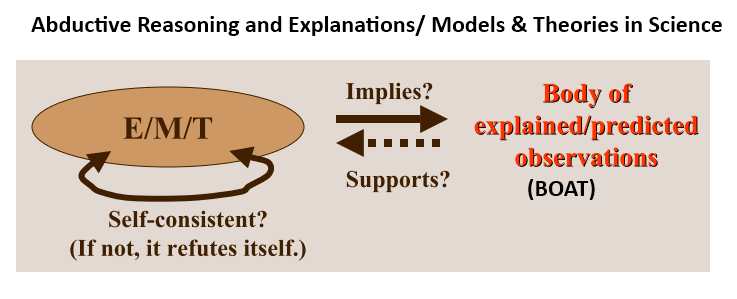
Where also the issue of successive warrant of claims leads tot he chaining of warrant and the issue of world-root foundations for arguments:
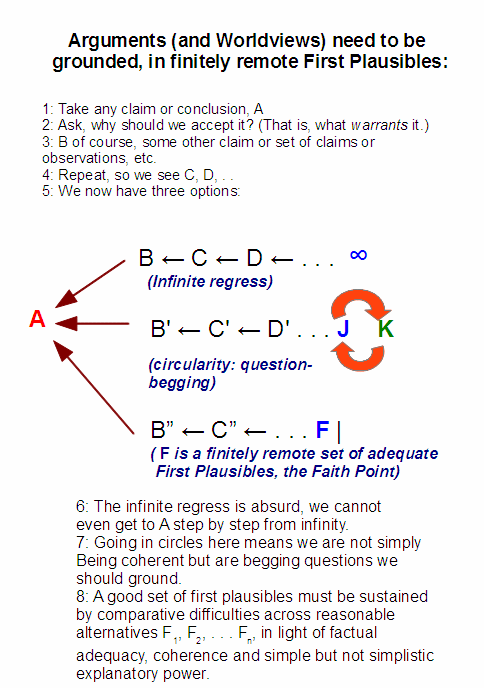
This sets the context in which we will be able to explore the issues of Science, origins and the basis for the scientific character of the design inference. END

